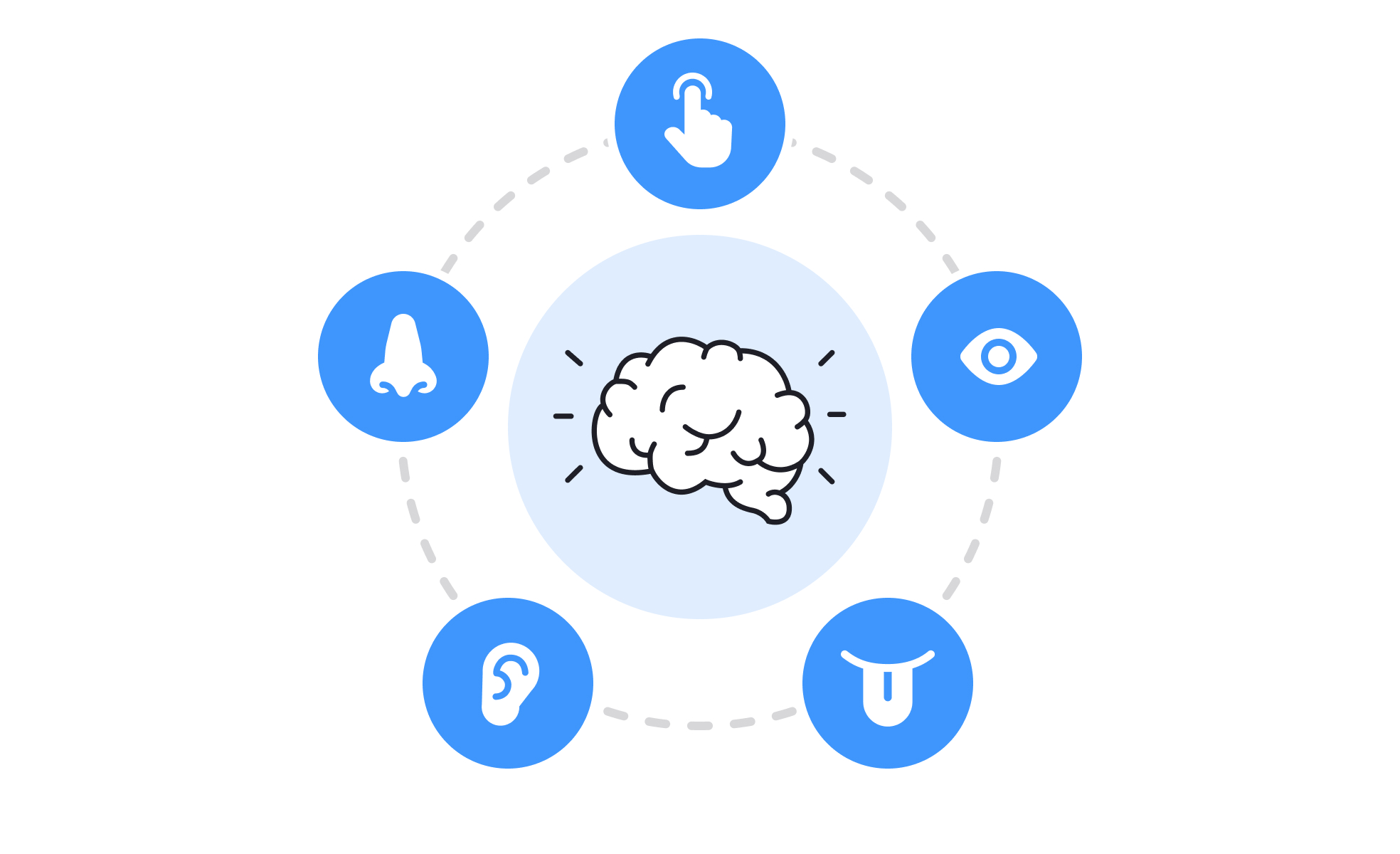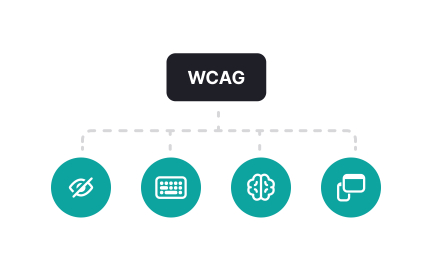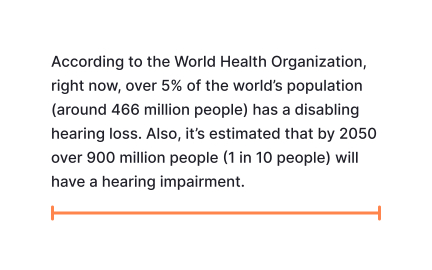Multi-Sensory Design
Multi-sensory design engages more than one sense, such as sight, touch, and sound, to make experiences clearer, more accessible, and more engaging.

What is Multi-Sensory Design?
Your digital products only engage users through visual and auditory channels, missing opportunities to create richer, more memorable experiences that leverage multiple human senses. You've probably noticed how some interfaces feel more immersive and engaging, often because they thoughtfully integrate haptic feedback, spatial audio, or other sensory elements.
Most digital design focuses exclusively on sight and sound when emerging technologies enable multi-sensory experiences that can dramatically improve usability, accessibility, and emotional engagement through touch, spatial awareness, and other sensory inputs.
Multi-sensory design is the strategic integration of multiple human sensory channels including touch, proprioception, spatial audio, and environmental awareness into digital experiences that create richer user engagement, improved accessibility, and more intuitive interaction through coordinated sensory feedback systems.
Multi-sensory experiences can increase user engagement by 30-50%, improve task completion rates by 25%, and create stronger emotional connections that drive higher user retention and satisfaction compared to single-channel interfaces.
Consider how Apple's Taptic Engine makes iPhone interactions feel more responsive through precise haptic feedback, or how spatial audio in AirPods Pro creates immersive experiences that change how people interact with digital content.
Why Multi-Sensory Design Matters for Future Interfaces
Your digital products compete for user attention in increasingly crowded sensory environments, while single-channel interfaces fail to create the memorable, engaging experiences that build strong user relationships and competitive differentiation.
The cost of single-sensory design limitations grows as technology capabilities expand. You miss opportunities for accessibility improvements, reduced user engagement in noisy or visually complex environments, and competitive disadvantage against products that leverage multi-sensory capabilities.
What strategic multi-sensory design delivers:
Enhanced accessibility through multiple sensory pathways that serve users with different abilities, preferences, and contextual constraints, creating more inclusive digital experiences.
When visual information is supplemented with haptic feedback, users with visual impairments can navigate more effectively, while users without impairments get richer confirmation of their actions.
Improved usability in challenging environments where visual or auditory channels are compromised by lighting, noise, or attention demands that require alternative sensory feedback mechanisms.
Stronger emotional engagement through coordinated sensory experiences that create more memorable interactions and deeper brand connections than single-channel interfaces alone.
Better spatial understanding in 3D interfaces, AR/VR environments, and complex data visualizations where multiple sensory channels help users navigate and comprehend spatial relationships more effectively.
Reduced cognitive load through sensory redundancy that reinforces important information across multiple channels, improving comprehension and retention for complex interfaces or critical actions.
Advanced Multi-Sensory Design Strategies
Once you've implemented basic multi-sensory integration, develop sophisticated sensory orchestration and adaptive systems.
Contextual Sensory Adaptation: Design multi-sensory experiences that adjust based on environmental conditions, user preferences, and device capabilities to optimize sensory channel effectiveness in different contexts.
Cross-Modal Sensory Substitution: Create systems where one sensory channel can substitute for another when environmental conditions or user needs require alternative sensory pathways for the same information.
Ambient Multi-Sensory Environments: Design subtle, persistent sensory environments that provide contextual information without demanding active attention, supporting user awareness and emotional state.
Biometric Integration: Incorporate physiological sensors that adapt multi-sensory experiences based on user stress levels, attention states, or physical responses to optimize sensory input timing and intensity.
Multi-sensory design refers to the intentional design approach that engages multiple senses to create immersive and meaningful experiences. It involves considering not only visual elements but also auditory, tactile, olfactory, and gustatory elements to evoke emotions, enhance engagement, and improve user experiences.
Multi-sensory design is used in various contexts to create impactful experiences, including:
- Retail and branding: In retail environments, multi-sensory design is employed to create immersive and memorable brand experiences. It may involve using ambient lighting, music or soundscapes, pleasant fragrances, and tactile materials to engage customers and enhance the overall shopping experience.
- Entertainment and media: In the entertainment industry, multi-sensory design is utilized to enhance storytelling and audience engagement. It may include incorporating special effects, surround sound, haptic feedback, and interactive elements to create a multi-dimensional experience.
- Product design: Multi-sensory design plays a role in product design by considering how a product's aesthetics, texture, sound, and even scent can influence the user experience. For example, the design of a car dashboard may focus on the tactile feel of the buttons, the sound of the door closing, and the visual appeal of the interior.
- User interfaces: Multi-sensory design can be applied to user interfaces to provide feedback, guidance, and enhance usability. This may involve using visual cues, sound effects, haptic feedback, or even voice-based interactions to create a more intuitive and engaging user experience.
Incorporating multi-sensory design offers several benefits, including:
- Enhanced user experiences: By engaging multiple senses, multi-sensory design creates more immersive and memorable experiences that go beyond traditional visual-only design. It can evoke emotions, trigger memories, and deepen the connection between the user and the designed environment or product.
- Increased engagement and attention: Multi-sensory design captures users' attention and holds their interest for longer periods. By appealing to multiple senses, it creates a more stimulating and engaging experience that encourages users to interact and explore further.
- Improved accessibility and inclusivity: By considering multiple senses, multi-sensory design can enhance accessibility for users with sensory impairments. For example, providing alternative sensory cues or incorporating universal design principles allows a wider range of users to engage and interact with the design.
- Differentiation and brand recognition: Utilizing multi-sensory design can help brands stand out by creating unique and memorable experiences. It enables brands to differentiate themselves in competitive markets and build stronger emotional connections with their target audience.
Recommended resources
Courses

Design Composition

Accessibility Foundations

3D Design Foundations
Lessons

Intro to Accessibility

Designing for Epilepsy










